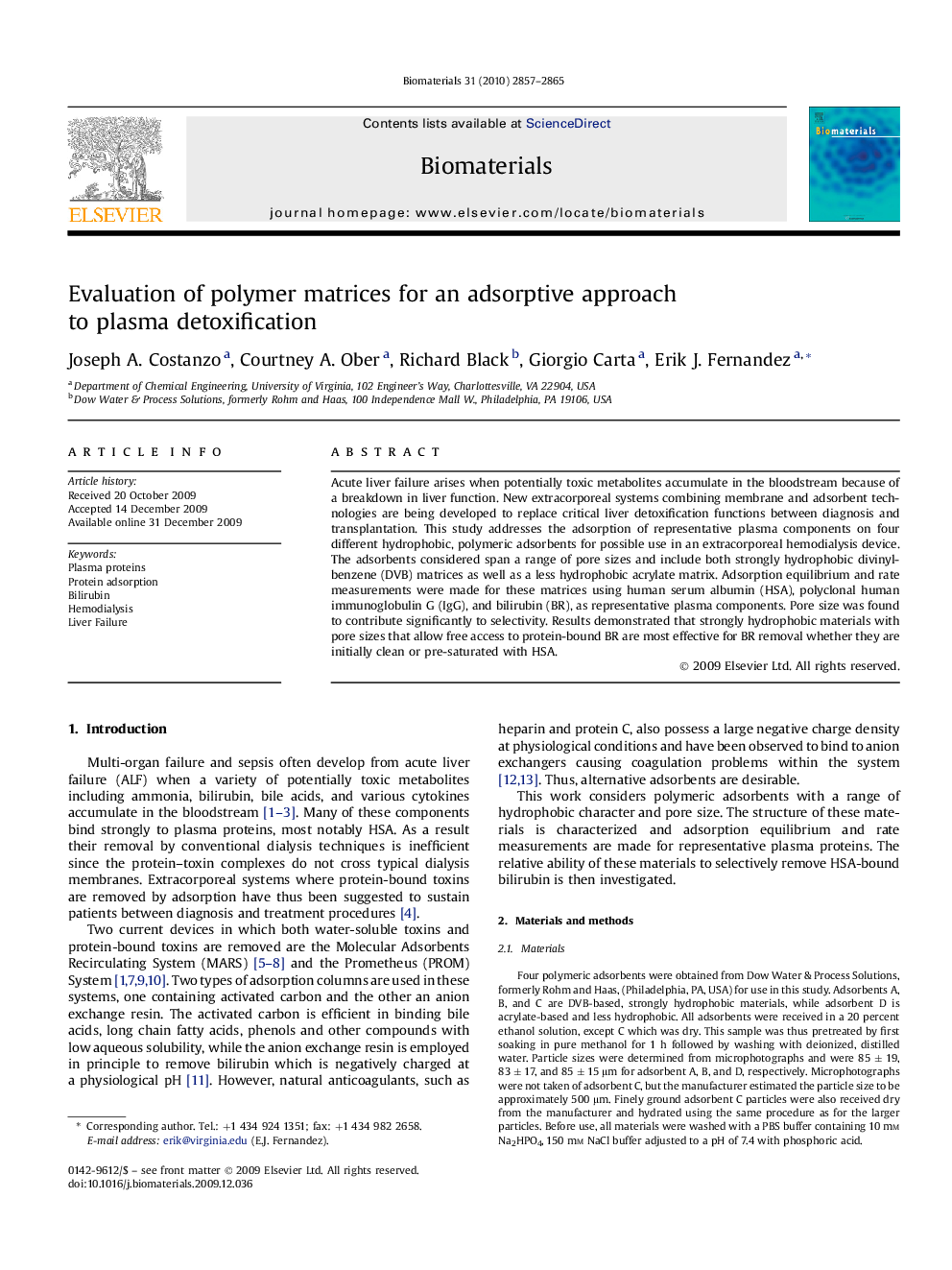| Article ID | Journal | Published Year | Pages | File Type |
|---|---|---|---|---|
| 8573 | Biomaterials | 2010 | 9 Pages |
Acute liver failure arises when potentially toxic metabolites accumulate in the bloodstream because of a breakdown in liver function. New extracorporeal systems combining membrane and adsorbent technologies are being developed to replace critical liver detoxification functions between diagnosis and transplantation. This study addresses the adsorption of representative plasma components on four different hydrophobic, polymeric adsorbents for possible use in an extracorporeal hemodialysis device. The adsorbents considered span a range of pore sizes and include both strongly hydrophobic divinylbenzene (DVB) matrices as well as a less hydrophobic acrylate matrix. Adsorption equilibrium and rate measurements were made for these matrices using human serum albumin (HSA), polyclonal human immunoglobulin G (IgG), and bilirubin (BR), as representative plasma components. Pore size was found to contribute significantly to selectivity. Results demonstrated that strongly hydrophobic materials with pore sizes that allow free access to protein-bound BR are most effective for BR removal whether they are initially clean or pre-saturated with HSA.
